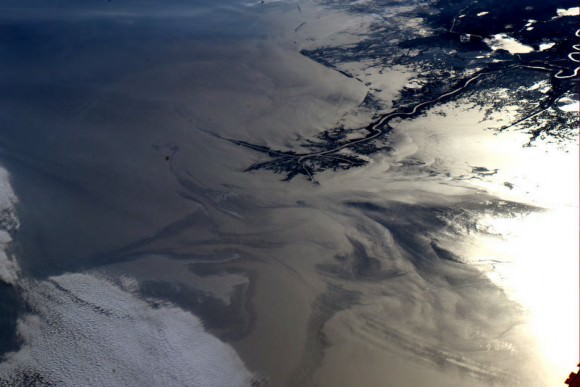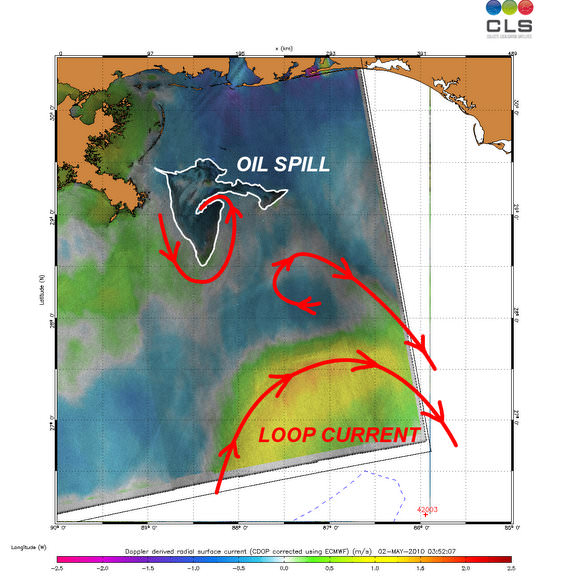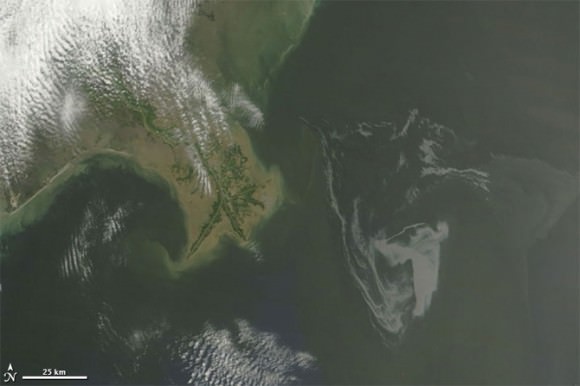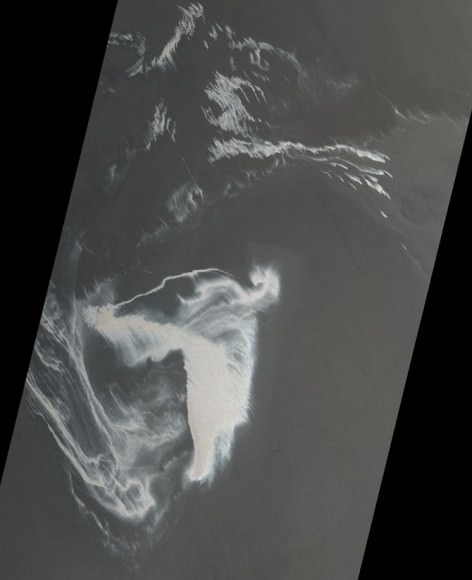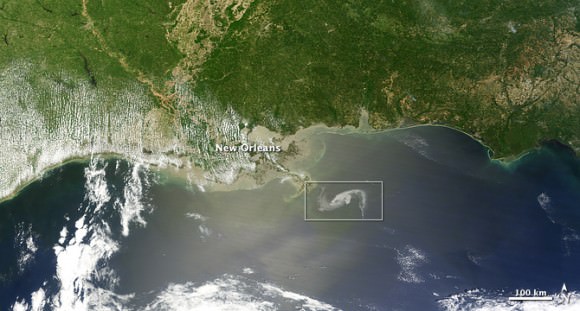[/caption]
Confirming some of the worst fears about the Deepwater Horizon oil spill in the Gulf of Mexico, satellite images now show part of the oil slick has entered the Loop Current, a powerful conveyor belt-like current that flows clockwise around the Gulf of Mexico towards Florida. The Loop Current joins the Gulf Stream — the northern hemisphere’s most important ocean-current system — and the oil could enter this system and be carried up to the US East Coast.
Both NASA and ESA satellites have been returning daily satellite images of the oil spill.
“With these images from space, we have visible proof that at least oil from the surface of the water has reached the current,” said Dr Bertrand Chapron of Ifremer, the French Research Institute for Exploitation of the Sea.
During the first weeks following the explosion at the oil rig, oil could be seen drifting from the site of the incident and it usually headed west and northwest to the Mississippi River Delta. But in the third week of May, currents drew some of the oil southeast. According to the National Oceanic and Atmospheric Administration (NOAA), the southward spread increased the chance that the oil would become mixed up with the Loop Current and spread to Florida or even the U.S. East Coast.
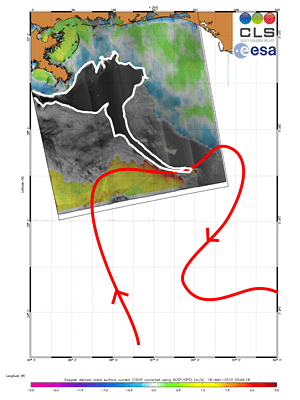
In this Envisat Advanced Synthetic Aperture Radar (ASAR) image, acquired on 18 May 2010, a long tendril of the oil spill (outlined in white) is visible extending down into the Loop Current (red arrow).
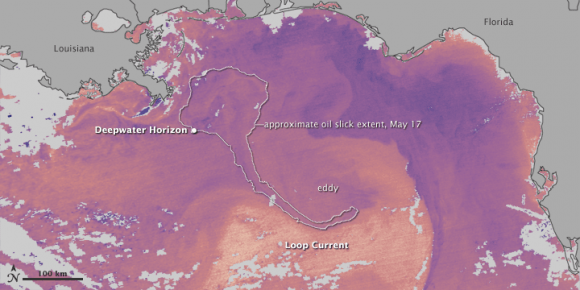
The infrared image is annotated with the location of the leaking well and the approximate location of the southern arm of the oil slick on May 17 (based on natural-color MODIS imagery). Oil was very close to the Loop Current, whose warm waters appear in yellow near the bottom of the image. However, there is also an eddy of cooler water (purple) circulating counterclockwise at the top of the Loop Current. According to NOAA, “Some amount of any oil drawn into the Loop Current would likely remain in the eddy, heading to the northeast, and some would enter the main Loop Current, where it might eventually head to the Florida Strait.”
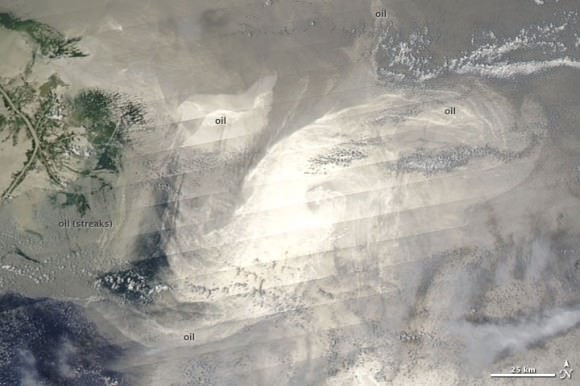
This unusual natural color image taken on May 18, 2010 by the Moderate Resolution Imaging Spectroradiometer (MODIS) on NASA’s Aqua satellite shows sun glinting off the oil slick. The diagonal stripes result from the Sun’s reflection on the ocean surface, called sunglint. The sunglint accentuates the left-to-right scans that the satellite sensor makes as it passes over the Earth’s surface, and the stripes are perpendicular to the satellite’s path.
Besides hinting at the sensor’s scans, the sunglint also illuminates oil slicks on the sea surface. Bright oil slicks appear east and southeast of the delta.
NASA’s and ESA’s satellites will keep watch on this oil slick from above.
Sources: NASA Earth Observatory, (this page, and this page, too), ESA



